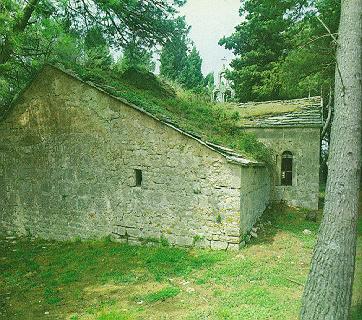
(The old church of Sv. Juraj in Gdinj)

Gdinj consists of several hamlets, which are separated from each other by up to 2 kilometres. At very entrance of the village there is a monument to the victims of the second World War in the shape of an obelisk with the names of the fallen on it. The hamlets of Visoka and Bonkovici dvori are a very interesting rural group. The church of Sv. Juraj (St. George) of early Renaissance style, built in the 16th century, and the cemetery are the most interesting monuments of the village of Gdinj. There is also the church of Sv. Lucija (St. Lucy) in the village.
The name of Gdinj comes from a word "bditi" - to stay up late, i.e. to keep vigil, which indicates that Gdinj was an important look-out post, having the same character as Zastrazisce, so it has a long history. Mounds from the Bronze Age can also be found, stretching this far on the plateau from Zastrazisce. These were Illyrian tombs of stones piled up high, and then covered with massive stone slabs. The so called Vela gomila (the big mound), 30 metres in diameter, and the one next to it, slightly smaller, were unfortunately destroyed.
In the village there is the Radovanovic house, a government listed building, with a painting collection, and a library.
Gdinj has a cove, Smrska, where there is the Angelini patrician country house.Towards the west is the cove of Kozja with the stronghold of the headman Matija Bartulovic from 1700. It served as a protection from pirates.